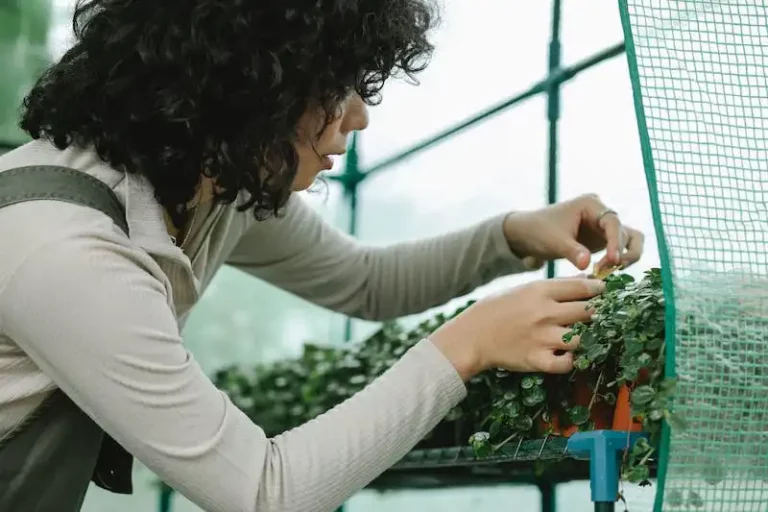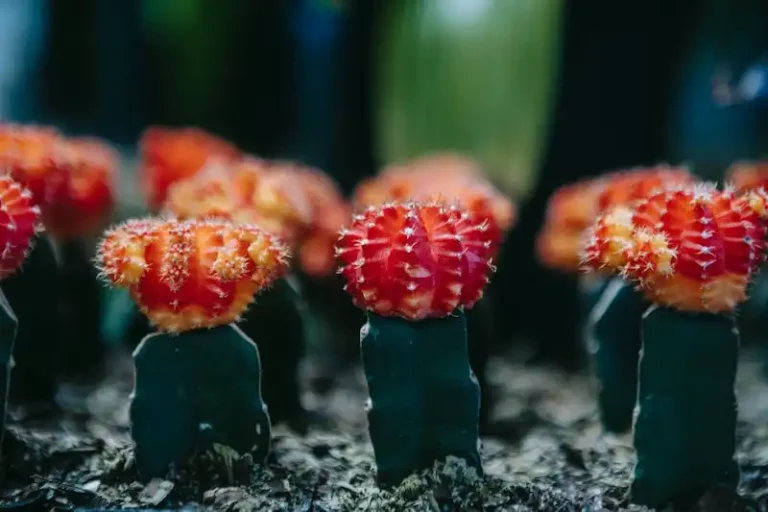The goal of pruning cherry trees is to develop a strong, healthy, and productive tree that is well-shaped and easy to manage. Most cherry trees show better fruit production and improved shape when they undergo regular pruning. Pruning helps in reducing disease and allows the tree to receive sufficient light and air circulation, thereby promoting good fruit set. However, pruning cherry trees requires knowing what cuts to make and when to make them.
Cherry trees are usually pruned in the late winter or early spring, before the warm weather sets in. The best time to prune cherry trees is when they are dormant, as this helps reduce the risk of disease and also minimizes stress on the tree. Some cherry tree growers prefer to prune in early summer after the tree has finished bearing fruit, but this can lead to excessive sap flow and possible disease infection.
When pruning, it is essential to have the proper tools, including sharp hand shears and a good-quality tree pruner. A sharp tool makes clean cuts, reducing the risk of disease. It is recommended to prune cherry trees using the heading back technique, which involves cutting just above an outward-facing bud, approximately 1/4 inch above the bud. This technique helps maintain the shape and form of the tree.
Pruning cuts should be made at a slight angle, sloping away from the bud or branch to prevent water accumulation. It is important to remove any dead, damaged, or crossing branches, as well as those that are growing towards the center of the tree. This helps to maintain an open center, allowing light and air to reach the inner branches. Additionally, thinning cuts should be made to reduce the density of branches and to eliminate any branches that are overlapping or rubbing against each other.
How to Prune Cherry Trees
Pruning cherry trees is an important task that helps promote healthy growth and ensure optimum fruit production. By properly pruning your cherry trees, you can stimulate the growth of new branches, improve the distribution of light and air, prevent disease and pest infestations, and increase the overall yield of fruit.
Here are some tips to help you prune your cherry trees:
1. Choose the right time: The best time to prune cherry trees is during the late winter or early spring, when the trees are not actively growing. Avoid pruning during warm summer months, as this can put unnecessary stress on the tree.
2. Use the right tools: Invest in a sharp, long-handled pruning saw and a pair of quality pruning shears. These tools will allow you to make clean and precise cuts without damaging the tree.
3. Start with dead, damaged, or diseased wood: Begin by removing any dead, damaged, or diseased wood from the tree. This will help reduce the risk of disease spread and improve the overall health of the tree.
4. thinning the branches: Cherry trees tend to produce more fruit than they can support. To ensure larger and higher-quality fruit, thinning the branches by removing some of the fruit clusters is necessary. Aim for about six to eight inches between each remaining fruit cluster.
5. Prune for shape and structure: Trim back any branches that are crossing or rubbing against each other. Focus on creating an open and balanced structure with well-spaced scaffold branches.
6. Renewal pruning: Cherry trees have a tendency to produce fruit on older wood. To encourage new growth and ensure continuous fruit production, prune about a third of the older wood each year. This will stimulate the growth of new branches and improve overall fruit quality.
7. Clean up and maintain: After pruning, make sure to clean up any fallen leaves, branches, or fruit. This will help reduce the risk of diseases and pests. Also, regularly inspect your tree for signs of disease or pest infestations and take appropriate measures to control them.
By following these pruning techniques and practices, you can ensure the maximum health and productivity of your cherry trees. If you have any questions or concerns about pruning your cherry trees, it is always best to consult with a professional arborist or horticulturist who specializes in fruit tree care.
Goals
When pruning cherry trees, you might have several goals. For young cherry trees, your main goal is to establish a strong and well-shaped central leader. This will help ensure a robust and healthy tree in the long run.
Crossing branches and central branches that overlap can be problematic, as they can rub against each other and create wounds that may lead to disease. Therefore, the goal is to remove any branches that are crossing or growing towards the center of the tree.
Though you might like the weeping formative of some cherry tree cultivars, it’s important to prune them to maintain good hygiene. Wiping down your pruning tools with a 10% chlorine solution before and after every cut can help prevent the spread of diseases.
For older cherry trees, your pruning goals might differ. The aim here is to maintain an open canopy and control the size of the tree. Removing any damaged or diseased branches should always be a priority. Also, thinning out excessive growth and cutting back long branches that are overly dominant can improve the overall health and shape of the tree.
When pruning dwarf cherry trees, the goals are similar to their larger counterparts. However, since dwarfs are smaller in size, the focus is on maximum fruit production and easy maintenance. Keeping the tree size small and compact will make it easier to reach all the branches for pruning activities.
By following these goals and methods, you can ensure that your cherry trees remain healthy, productive, and beautiful.
When to Prune Cherry Trees
Pruning cherry trees is an important task for any gardener looking to promote healthy growth and a bountiful harvest. Knowing when to prune your cherry trees is crucial for maximizing their potential and maintaining their overall health.
The best time to prune cherry trees is in late winter to early spring, ideally between March and early April. This is when the trees are dormant and before the new growth begins. Pruning at this time encourages strong growth and helps shape the tree for the upcoming growing season.
Pruning cherry trees during the dormant season allows you to easily identify and trim any dead, damaged, or diseased wood. It also helps to remove any crowded or crossing shoots that can cause problems as the tree grows. Removing these shoots improves air circulation within the tree, reducing the risk of fungal diseases and other issues.
When pruning cherry trees, it’s important to have a clear goal in mind. Whether you want to maintain an open, central leader formation or create a more bush-like shape, you should prune accordingly. Different cherry tree varieties may require different pruning techniques, so it’s always best to consult a pruning guide or seek advice from a knowledgeable gardener.
One common approach to pruning cherry trees is the “five-step method.” This method involves starting with the removal of any dead, damaged, or diseased wood, followed by thinning out any crowded or crossing branches. Next, you can prune to shape the tree, removing any overly long or unruly branches. Finally, you can lightly trim the tips of the leaders to encourage upward growth.
| Pruning Tasks | When to Prune |
|---|---|
| Remove dead, damaged, or diseased wood | Late winter to early spring |
| Thinning out crowded or crossing shoots | Late winter to early spring |
| Prune to shape the tree | Late winter to early spring |
| Lightly trim tips of leaders | Late winter to early spring |
It’s important to note that cherry trees can also be pruned in the summer, though this should be done with caution. Pruning in summer can stimulate new growth, making the tree more susceptible to diseases and pests. If you do decide to prune in the summer, it’s best to do so early on and avoid hot, dry periods to prevent stress on the tree.
In conclusion, knowing when to prune cherry trees is crucial for their overall health and productivity. Late winter to early spring is the optimal time for pruning, as it allows for the removal of dead wood and shaping the tree before new growth begins. Following the proper pruning techniques and consulting a pruning guide or knowledgeable gardener can help ensure the success of your cherry tree.
Sources: The Gardening Handbook
When to Prune Sweet Cherry Trees
Pruning sweet cherry trees is an essential part of their care and maintenance. Proper pruning helps in maintaining the health and productivity of the tree, promotes better air circulation, and ensures the production of quality fruit. It is important to prune sweet cherry trees during the dormant season, which is typically in late winter or early spring.
Here are some tips and guidelines for pruning sweet cherry trees:
- Remove dead or damaged branches: Start by removing any dead or damaged branches. This helps prevent the spread of fungal or bacterial diseases and ensures the overall health of the tree.
- Prune for structure: Prune to establish a strong scaffold structure. Remove any competing branches or branches that are crossing or rubbing against each other. Maintain an open center with a central leader to encourage upward growth.
- Thin out fruitwood: Sweet cherry trees tend to produce fruit on older wood. Thin out fruitwood to allow for better light penetration and airflow. Remove one-third of the old stems each year to promote the growth of new fruiting wood.
- Heading cuts: Use heading cuts to control the height and spread of the tree. Make heading cuts just above an outward-facing bud or lateral branch to encourage outward growth. This helps in making the tree more manageable and prevents it from becoming too tall or crowded.
- Remove suckers and water sprouts: Suckers and water sprouts are vigorous, upright shoots that usually grow from the base or along the main branches of the tree. Remove them to maintain the desired shape and structure.
- Prune weeping varieties: Weeping cherry trees have a unique growth habit. Prune them to maintain their weeping form and remove any branches that disrupt the desired shape.
- Prune for fruit-thinning: If your sweet cherry tree produces an abundance of fruit, you may need to thin out the fruit to ensure larger and healthier cherries. Remove excess fruit to prevent overcrowding and to improve the overall yield.
Remember to always use clean and sharp tools when pruning sweet cherry trees. Disinfect your tools before and after use to prevent the spread of diseases. Prune branches at an angle to prevent water accumulation. And don’t forget to wear protective gear, such as gloves and safety glasses, to ensure your safety while pruning.
Following these pruning guidelines will help you maintain the health and productivity of your sweet cherry trees, ensuring a bountiful harvest in the years to come.
When to Prune Sour Cherry Trees
Pruning is an essential part of gardening, and it is important to know when and how to prune sour cherry trees. Pruning helps to maintain the health and shape of the tree, ensuring a bountiful harvest. To prune sour cherry trees like a master gardener, you will need the best tools, such as shears, and a good understanding of the tree’s growth habits.
The best time to prune sour cherry trees is in late winter or early spring, before the tree starts to grow. Pruning during this time allows the tree to focus its energy on developing stronger branches and fruit production. It is important to thin out the branches to create an open structure, allowing better air circulation and light penetration. The branches should be spaced about 6-12 inches apart to avoid overcrowding.
When pruning a young sour cherry tree that has just been planted, it is important to remove any damaged or broken branches. You should also trim back any lateral branches that are growing too close to the ground or crossing each other. This will help to prevent pest and disease problems and promote healthy growth.
During the warm months, you can also use pruning tools to shape the tree’s scaffolds. Though you may be tempted to prune the sweet cherry trees heavily, sour cherry trees need less pruning. However, you still need to take care to remove any crowded or crossed branches, especially near the center of the tree. This will help to keep the tree open and allow air and light to reach all parts of the tree.
Pruning sour cherry trees once a year not only helps with pest and disease control but also reduces the threat of frost damage. Pruning in late winter or early spring also encourages branching, which can give the tree a stronger structure and make it less susceptible to wind damage or fruit drop.
One type of pruning that is important for sour cherry trees is fruit-thinning. This involves removing some of the fruits when they are still small and developing. Thinning the fruits allows the remaining ones to grow larger and come to maturity faster. This helps to ensure a better harvest and reduces the risk of branches breaking under the weight of too much fruit.
The location and variety of the cherry tree can also determine the best time to prune. If you have a weeping or dwarf variety, it may need pruning in the beginning of the season to shape or train it. On the other hand, old and larger trees may need some corrective pruning to remove dead or damaged branches.
When pruning sour cherry trees, it is important to have the right equipment and follow proper techniques. Make sure your pruning tools are sharp and clean to make clean cuts. Cut branches just above a bud or lateral branch at a slight angle to help with water runoff. If branches are thicker than your pruning shears can handle, use a saw and make sure to sanitize the tools between cuts to prevent the spread of diseases.
Overall, knowing when to prune sour cherry trees and having clear goals in mind will help you achieve the desired results. Pruning at the right time and giving the tree enough care and attention throughout the year will lead to a healthy and pleasing tree that produces an abundant harvest.
Source: link


